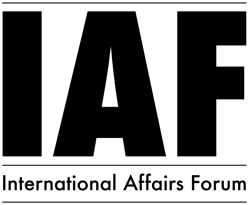| Thu. July 17, 2025 |
 |
|
||
|
||||
| ||||

Kashmir has been under systematic repression since 1947, with over 100,000 civilians killed and the territory becoming the largest open-air prison in the world. Indian troop deployment, involving nearly one million soldiers, reflects demographic colonization and political suppression.
The martyrdom of Burhan Wani on July 8th, 2016, has revived the indigenous freedom struggle and led to mass uprisings against settler-colonial practices. His legacy encourages self-determination and resistance, and calls for youthful Kashmiris and their leadership to continue their quest for justice and sovereignty.
Born in Dadasara, Tral, Pulwama, Burhan Muzaffar Wani was an intelligent student who dropped out of high school at the age of 15 due to frequent security turmoil in Kashmir. In 2010, he joined Hizbul Mujahideen and the Indian government placed 1 million Indian rupees bounty on him in 2015. His death saw 53 days of curfew, more than 96 deaths, and 15000 civilian casualties as a sign of the self-determination fight in Kashmir. The death of Wani led to a 53-day curfew and more than 96 deaths.
Wani, who went a step ahead to join the Kashmiri weapons of Liberation on October 16, 2010, was beaten up mercilessly by the Indian troops that pushed him to the limit to take a step forward to join their weapons of Liberation. Over the next six years, through social media, he would achieve massive followership among the Kashmiri youth, telling the story of the resistance and self-determination of a native people. Declared a significant threat to Indian security in Inida Illegally Occupied Jammu & Kashmir (IIOJK), his management ended in martyrdom on August 7, 2016.
To this act, more than one million mourners flocked to Eidgah Tral to attend forty funerals and were buried next to his elder brother Khalid. The monumental outpourings strengthened his role as a luminary to the Kashmiri cause.
In June 2016, a digital campaign led by Kashmiri activist Wani was shared over 500,000 times on Facebook and pro-freedom pages, disrupting the security establishment in New Delhi. Wani engineered over 20 breakout actions, establishing grassroots strength and enlisting around 600 Kashmiri young adults on WhatsApp and YouTube. Despite 80% of internet service days being blacked out in IIOJK, his messages managed to break through the blackout using a VPN relay service, ensuring continuity of communication. This contributed to the renewed indigenous insurgency and the publicity of the restrictiveness of intense militarization against computerized resistance, changing the world's perception of the plight of Kashmir.
This is intrinsically unfathomable without the aspect of sacrifice, as since 1947, the Kashmiri struggle has produced more than 100,000 martyrs, none of whom was brought to breaking point by draconian measures. Leaders such as Sheikh Abdullah and icons like Burhan Wani also left their names in the memory of Kashmir. Eight months of unrest followed after Wani was martyred on July 8, 2016; 241 consecutive days of shutdowns, over 50 days of curfew, and 120 days of internet blackouts. Also during this time, 96 were killed, over 15,000 wounded, and more than 1,500 others blinded due to being struck by pellets, proving the undeterred commitment to self-determination irrespective of the level of oppression.
Resistance has grown by force, as history has taught us, and Kashmir has never ceased to be under the Kashmiri identity even after seven-plus decades of militarization. UN Security Council Resolutions 47 (1948), 80 (1950), 98 (1952), and 122 (1957) provide for a free and impartial plebiscite, which requires demilitarization and limits the number of troops under UN auspices.
There must be an immediate restoration of civil liberties, including an end to communication blackouts and the cessation of rights abuses. The stakeholders of India, Pakistan, and Kashmir should come to a real, meaningful, constructive, and inclusive dialogue as provided in articles 33-34 of the UN charter. The only possible way toward self-determination and lasting peace is to implement these resolutions so that the ideology and identity of Kashmir cannot be crushed by coercion.
Abdul Mussawer Safi has pursued a master's degree in International Relations. His research domain primarily lies in the regional dynamics of South Asia, with a focus on strategic and terrorism studies. Safi has worked as a correspondent with various media outlets and think tanks, including the International Policy Digest (IPD) and the Institute of Policy Studies (IPS) in Islamabad.
| Comments in Chronological order (0 total comments) | |
| Report Abuse |
| Contact Us | About Us | Donate | Terms & Conditions |
|
All Rights Reserved. Copyright 2002 - 2025